Measurement with the video made in Bayrischzell
The video from Bayrischzell shows 7 positive frames with 1/50s. The signal is burned out so a photometry is not possible.
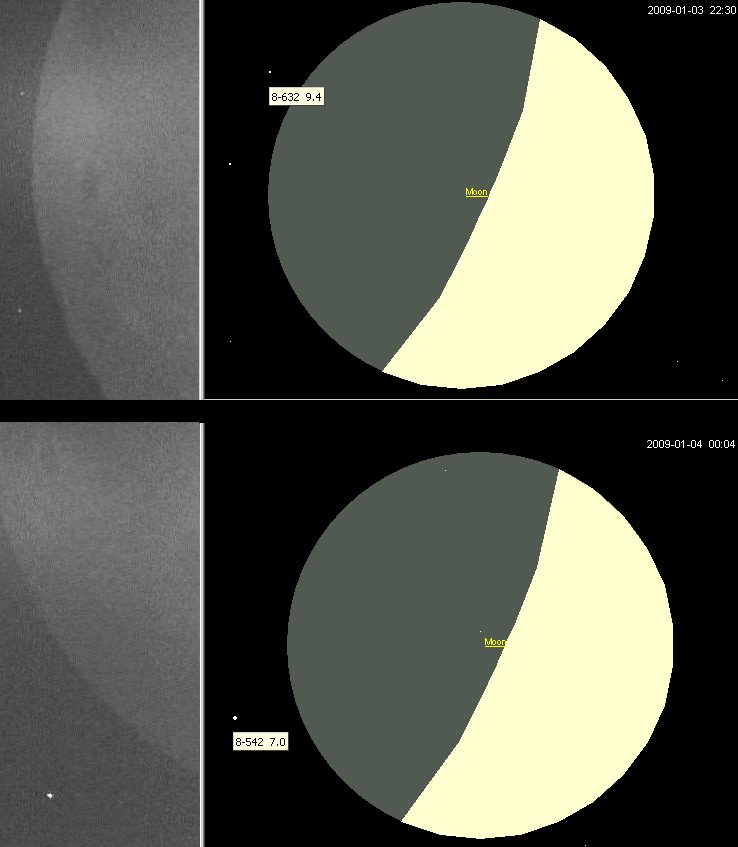
During the night some bright field stars passed the moon and could be used to compare the diameter. The impact is significant bigger than a star with 7,0mag. A rough estimate with 6,5mag and +-0,5mag deviation appears plausible.

Measurement with the video made in Stuttgart
Otto Farago used a camera with a Automatic Gain Control (AGC). The signal was regulated down, whenever the bright moon was visible in the field of view. The short second of the impact was one of the darkest moments on the video. This is an advantage and a disadvantage at the same time. The impact is only sure on one picture. A weak signal is maybe visible on a second frame. On the impact-frame are no field stars. All frames with acceptable fieldstars are much brighter. We attempted to calibrate the frames by the earthshine.
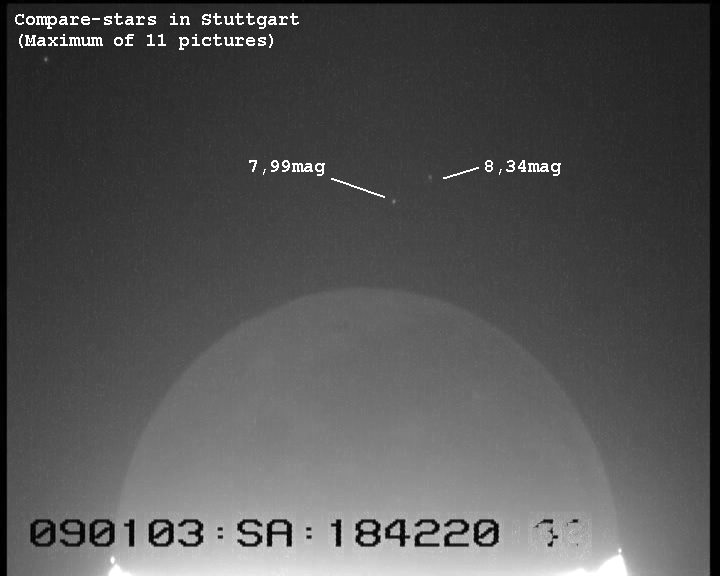
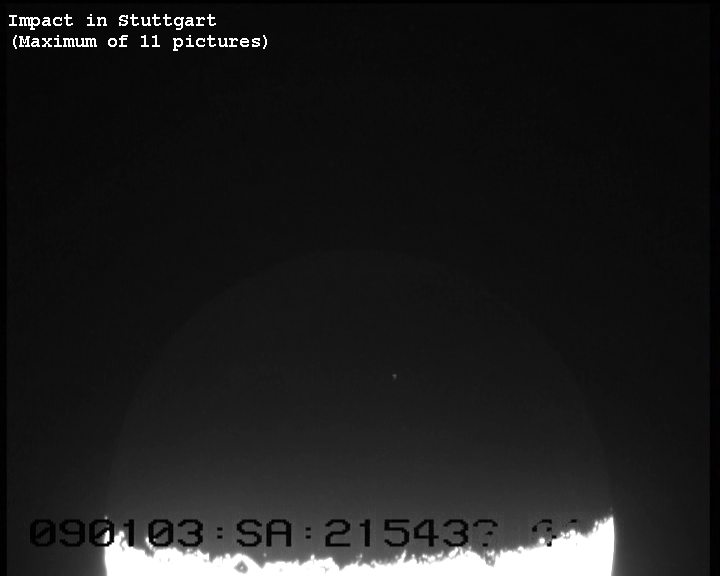
The calibration was made in several steps:
-first 11 pictured of the stars and 11 pictures of the impact are averaged to rise the SNR.
-The impact frame was added on the average-frame with the function "Maximum Pixel Value".
-the result pisc are calibrated with gamma 0,45
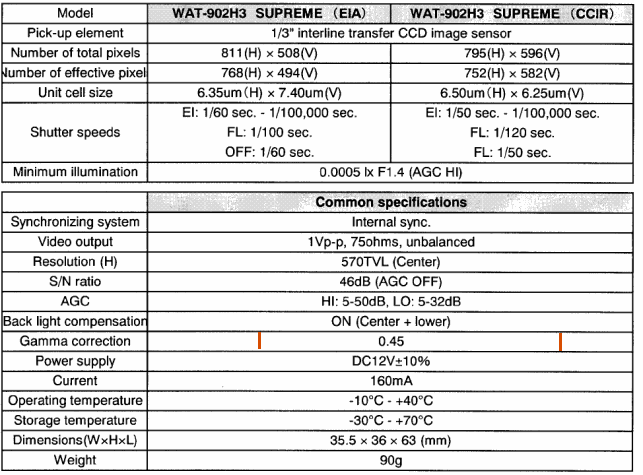
-the frames were aligned in the same position
-the brightess was changed to get similar pixelvalues of the moon-surface at the impact-position
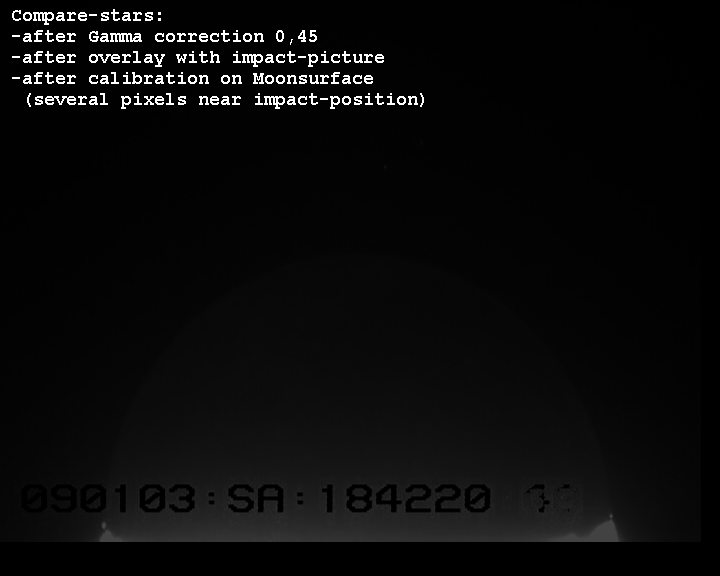
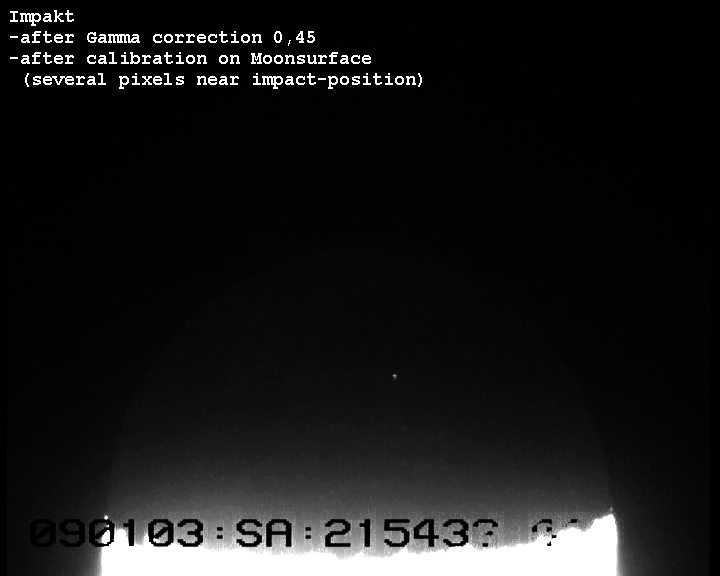
-both pictures are added with the function "Maximum Pixel Value"
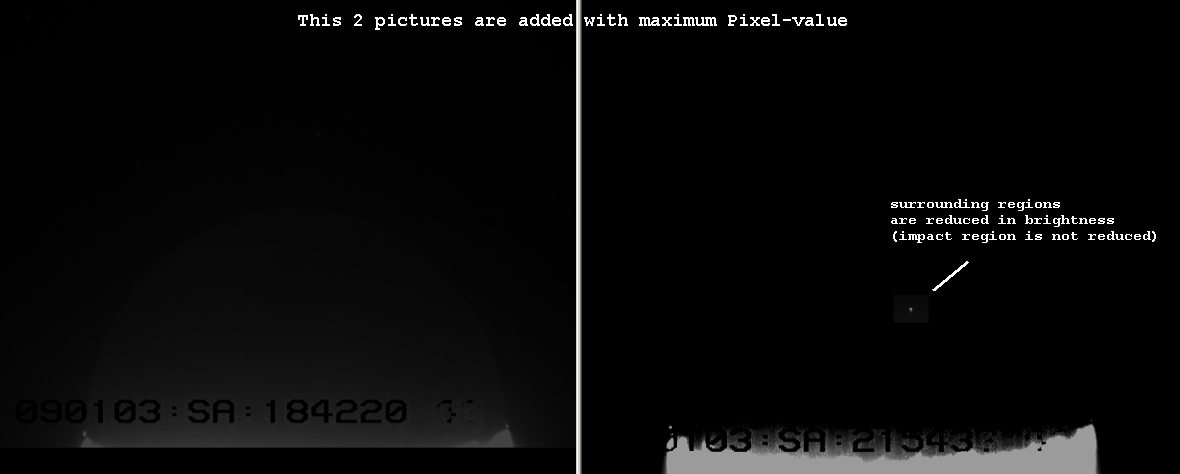
-the result picture was used for photometry. The 8-bit picture looks very dark, but with 16-bit the stars lose no greyscale-value!
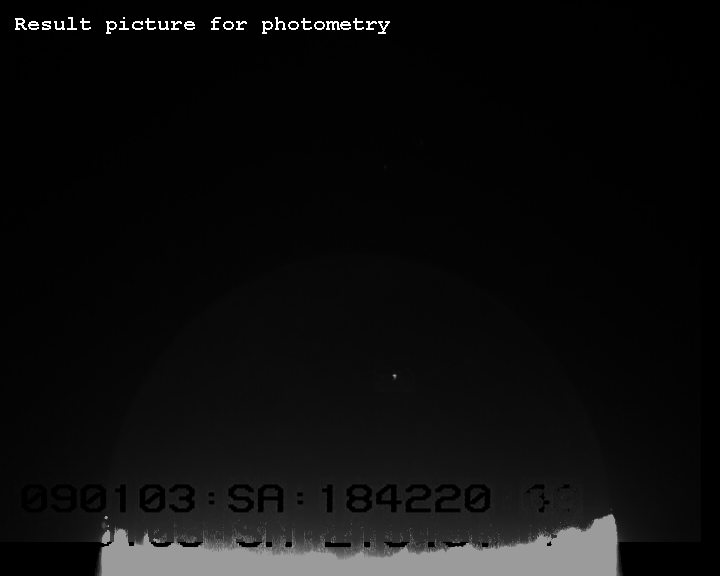
The method is not very reliable. So we repeat the measurement-procedure several times to get a feeling for the possible error.
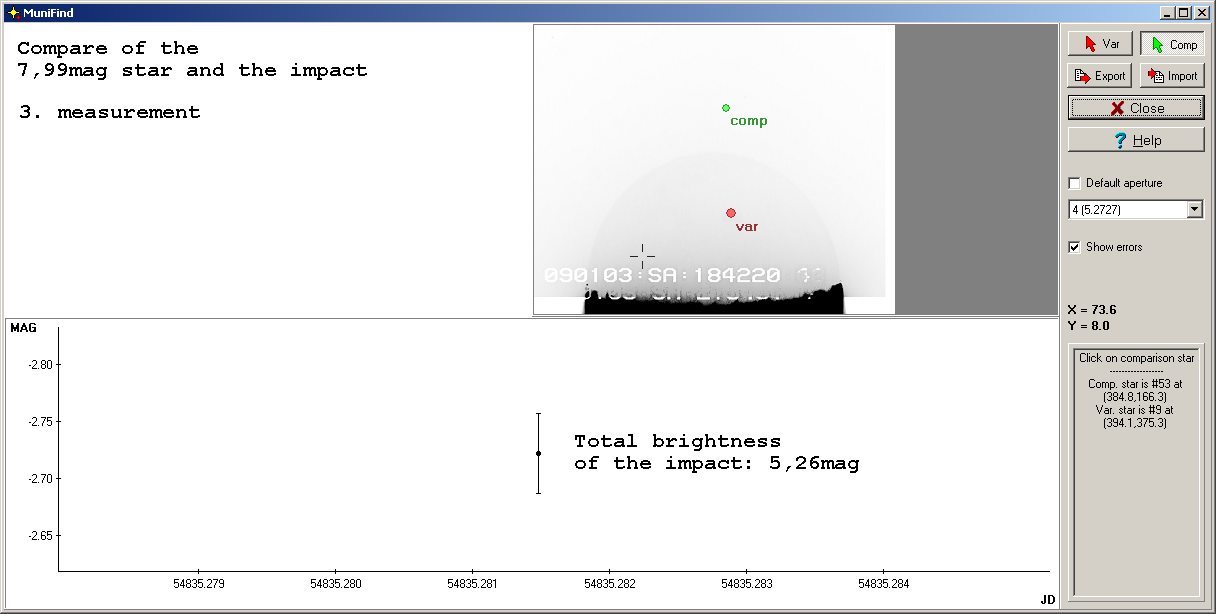

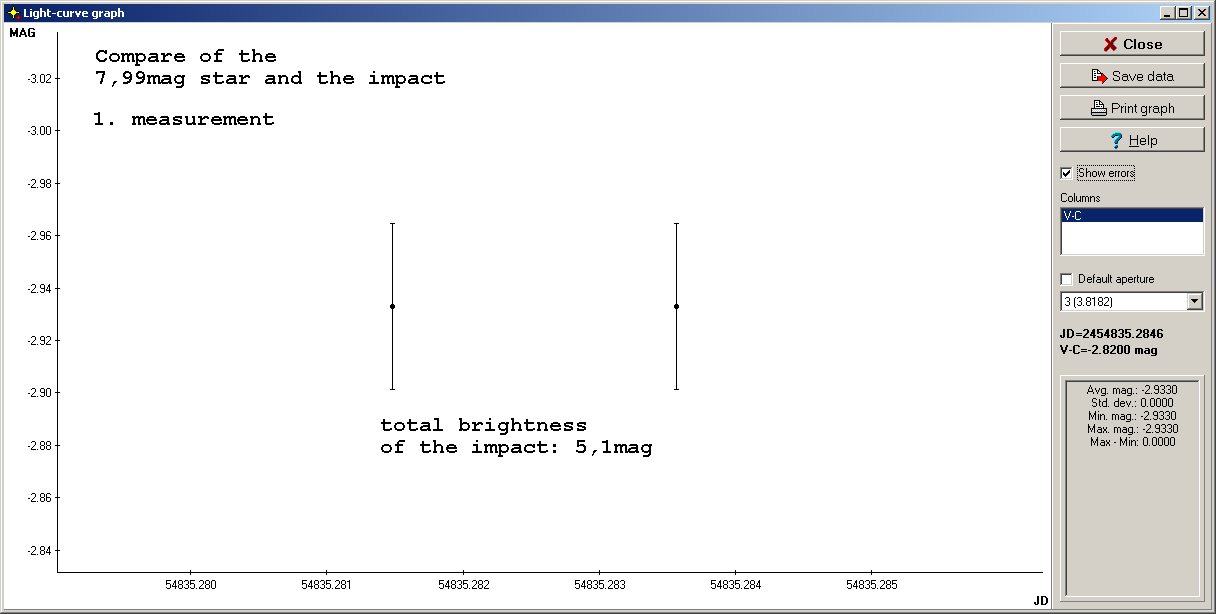
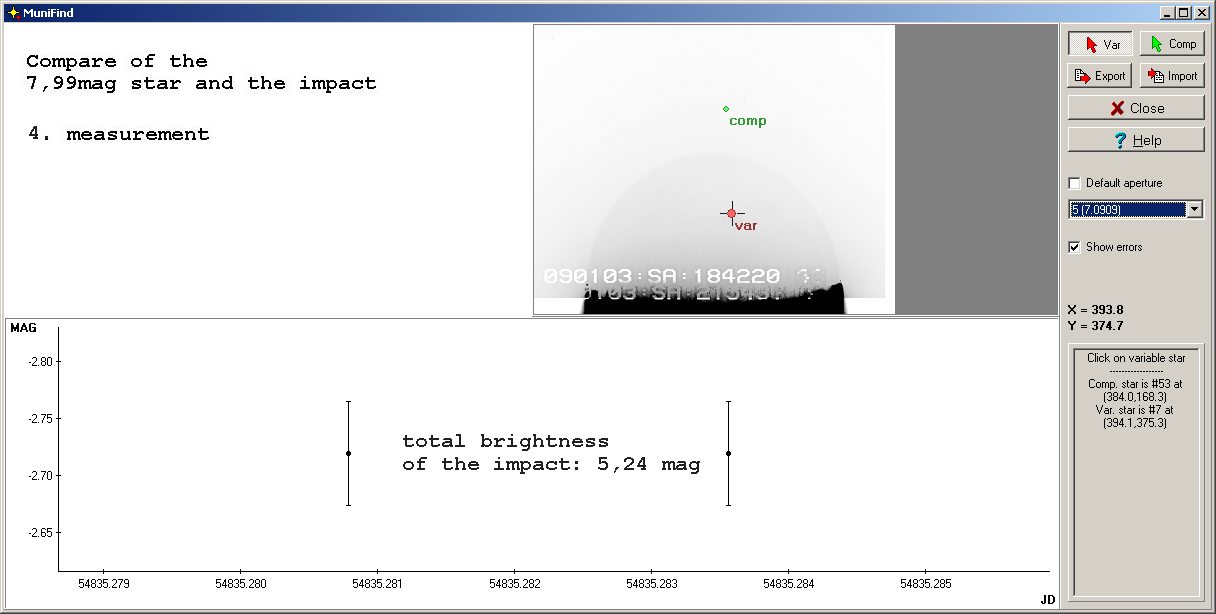
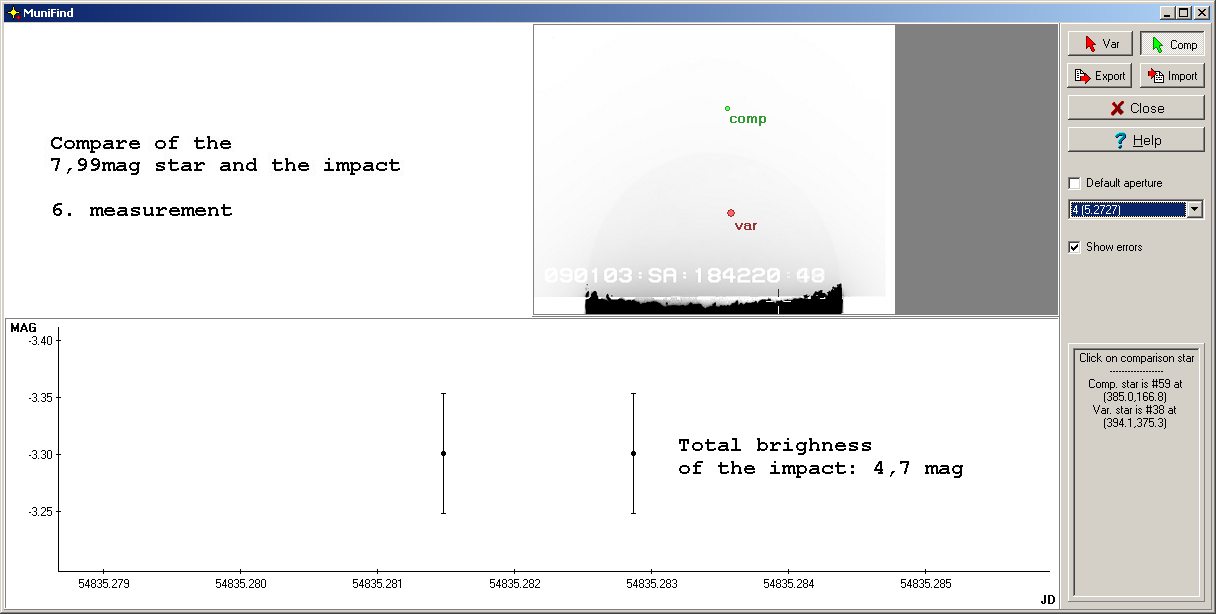
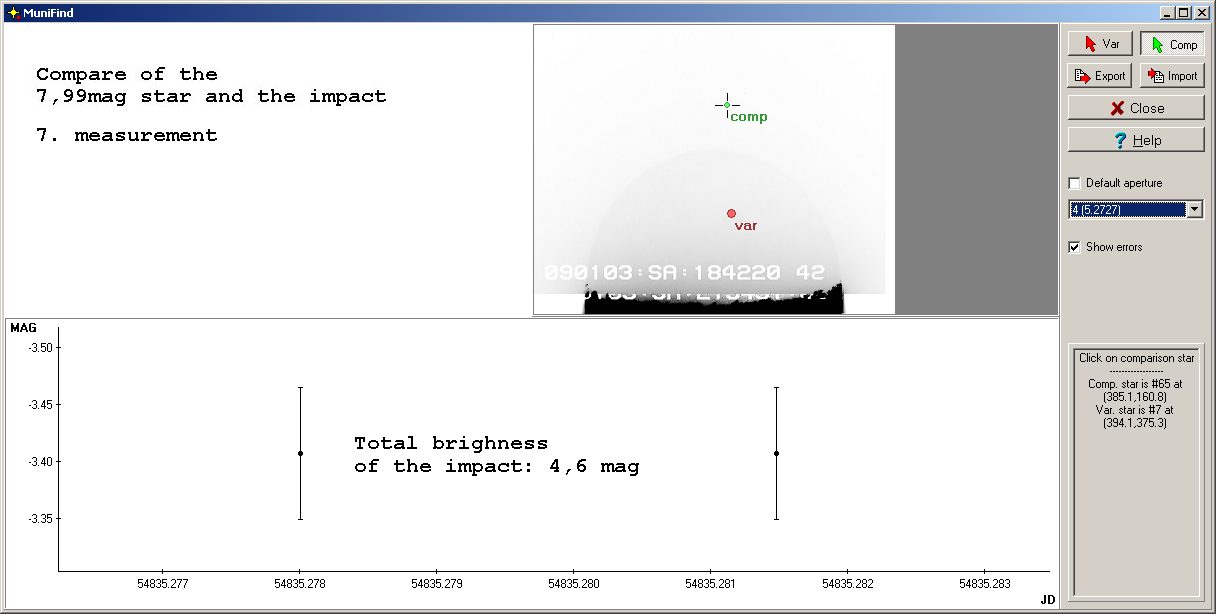
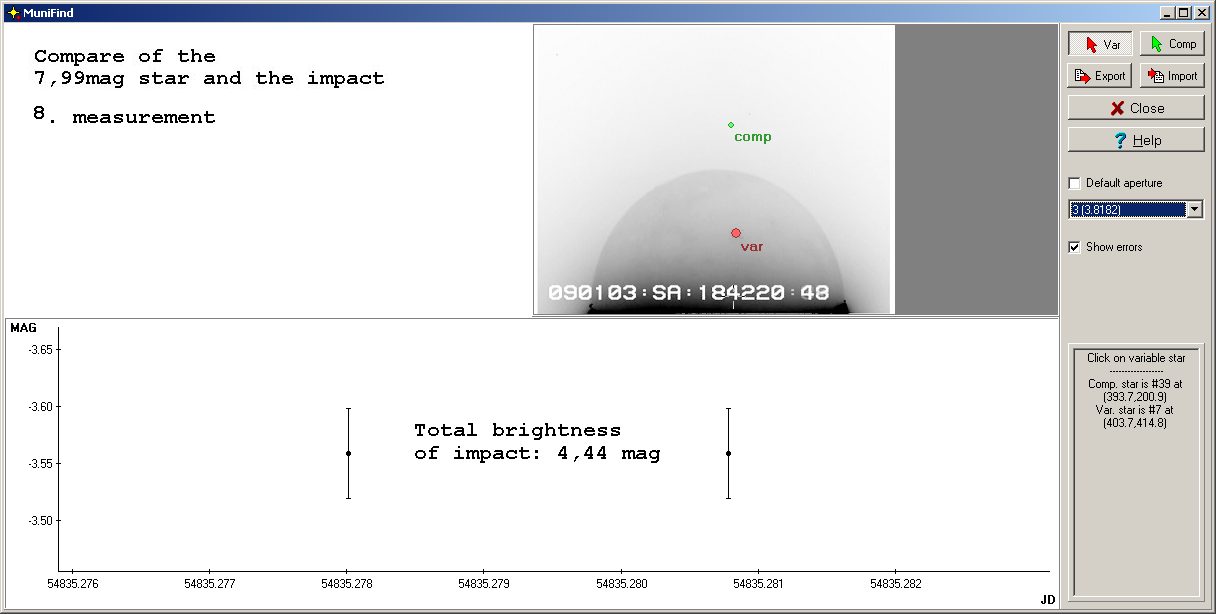
Most plausible is a brightness of 5,0mag with an error of +-0,8 mag. There is more than one magnitude difference between the frames of Bayrischzell and Stuttgart. That is not plausible. Michael Parl and Andreas Eberle checked also the data. They have much more experience in photometry and extimated the brightness near 6,0 mag.


Hauptseite
Impaktseite der NASA (MEO-Projekt)
Infos about the Gamma at the Watec-Caneras
Liste aller der NASA gemeldete Double-Station-Impakte Beobachternamen
Bestätigte Impakte mit doppelter Beobachtung außerhalb des NASA-MSFC
Lunar Impacts bei der ALPO http://alpo-astronomy.org/lunar/lunimpacts.htm
Mintron & Watec Aufnahmen

zur Photogallerie